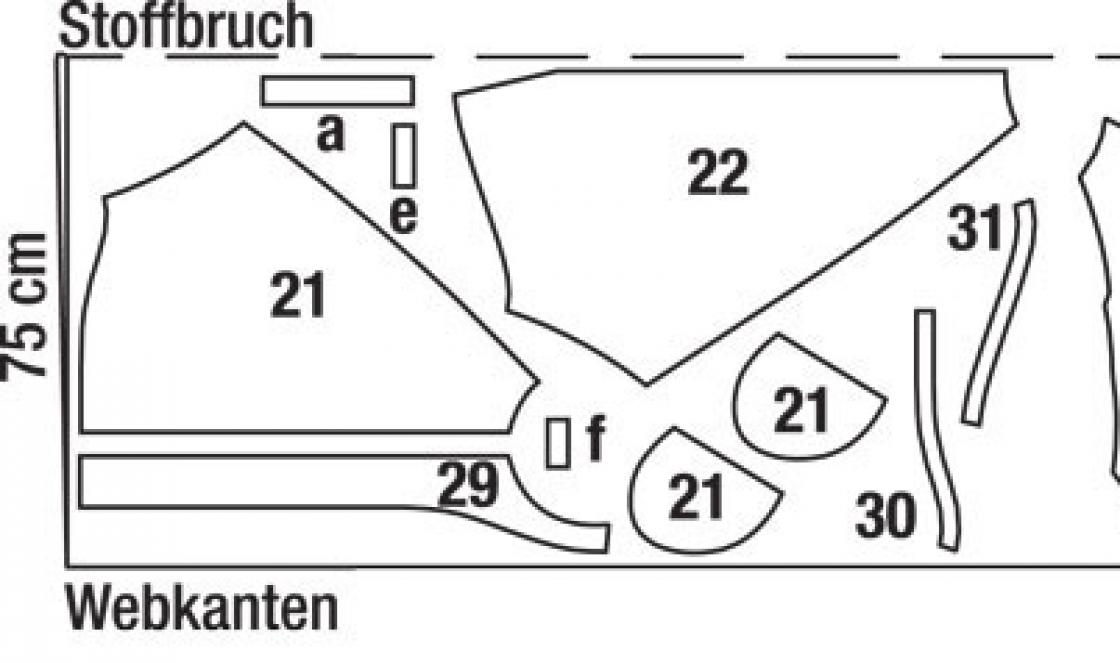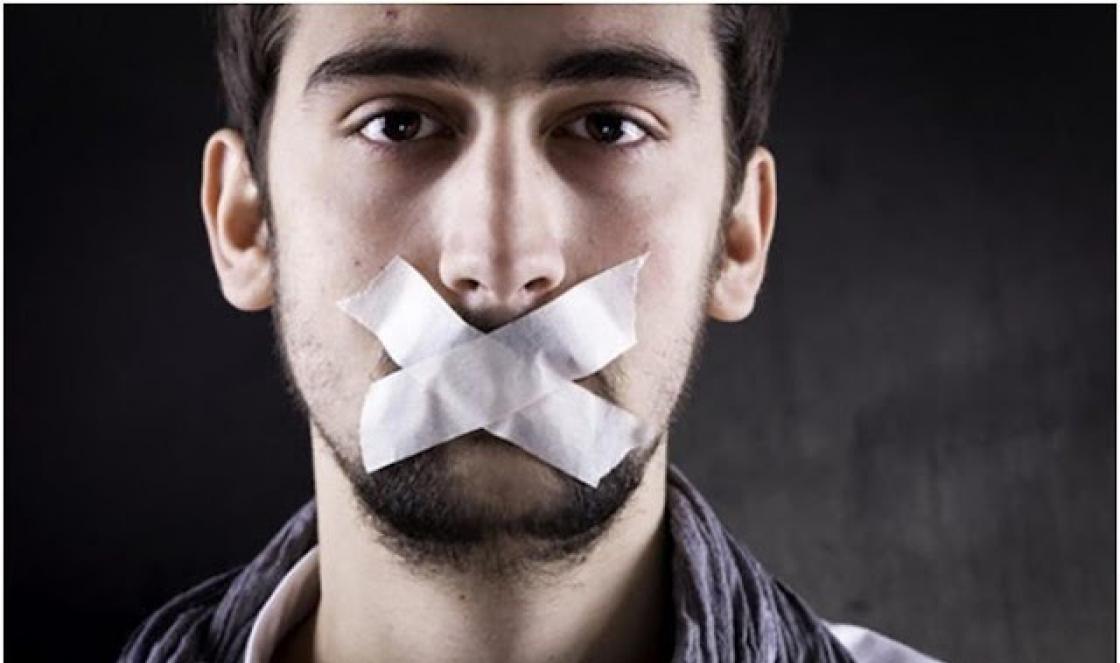The occurrence of pain in the left side has many causes. To make a diagnosis, the nature of the unpleasant sensations, exact localization, and connection with physical or emotional stress play an important role. Only with the help of additional research methods does the doctor make a final conclusion. This may be a functional condition or a serious pathology.
Types of pain
IN abdominal cavity There are many organs, all of them have their own innervation and are a source of pain during injuries and inflammatory reactions. Also, diseases of the heart and lungs are transmitted to this area. The nature of the unpleasant sensations varies:
1. In the visceral type, the cause of pain is directly from the abdominal organs. An ulcer, rupture, or intestinal spasm contribute to the activation of nerve endings.
2. Peritoneal character is observed when the sheets of the peritoneum are irritated. In this case, the pain is clearly localized, sharp or stabbing. The abdominal muscles are in spasm, the stomach becomes plank-shaped.
3. The reflected type occurs with diseases of distant organs, for example, lungs, heart, pleura. Due to the general innervation, the pain radiates to the left side.
Possible reasons
You can often hear the complaint that a person has colitis in the left side. But is this always a pathology? The most common reasons:
- Physical activity is stressful for an unprepared body. Therefore, fast running and heavy exercise can manifest as acute pain under the left rib.
- Diseases, ruptures of the spleen.
- Diaphragmatic hernia.
- Pathology of the gastrointestinal tract: gastritis, ulcer, perforation, colitis, enteritis.
- Inflammation of the pancreas, cancer, abscess.
- A tumor in the abdominal cavity causes compression of neighboring organs, and irritation of the peritoneum occurs.
- Intercostal neuralgia.
- Pleurisy, lower lobe pneumonia.
- Heart diseases: myocardial infarction, angina, cardiomyopathy.
- Osteochondrosis of the thoracic spine.
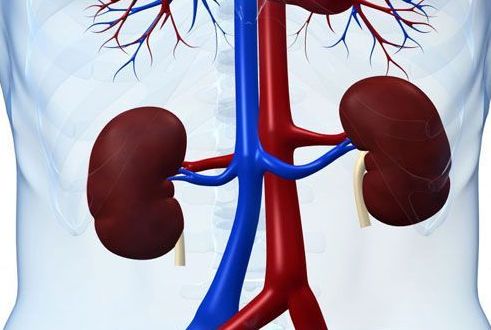
A stabbing pain in the left side under the ribs bothered every beginner in the sport. Experienced trainers know that before starting classes you need to warm up and stretch well. If you immediately load the body, heart, respiratory system cannot immediately get back to work. Blood enters the muscles from the depot, but the outflow does not have time to occur, as a result it accumulates in the spleen. The organ capsule is stretched. That's why the left hypochondrium hurts while running, and it gets worse when you inhale. To avoid this, 15-20 minutes before the main workout are devoted to warming up and stretching.
2. Diaphragmatic hernia.
The chest cavity is separated from the abdominal cavity by a muscular septum - the diaphragm. It has ring-shaped openings through which the aorta, venous vessels, and esophagus pass. With obesity, pregnancy, and excessive physical activity, the muscle ring weakens and the gap becomes wider. The cardiac part of the stomach is drawn into the chest cavity, and at the same time, hydrochloric acid is refluxed into the alkaline environment of the esophagus. The pain is constant, occurs after eating, and is accompanied by belching, heartburn, nausea, and vomiting.
3. Diseases of the gastrointestinal tract.
The stomach is located in the epigastrium (above the navel), but the fundus and greater curvature are located in the hypochondrium. The cause of pain in the side is gastritis. Helicobacter pylori infection, poor diet, and stress cause an inflammatory response. In a chronic process there are discomfort stupid character. In case of exacerbation, erosion - acute. The patient complains of lack of appetite, a feeling of fullness in the abdomen, early fullness. Nausea may result in vomiting. To confirm the diagnosis and choose treatment tactics, endoscopic examination is necessary.
Peptic ulcer disease has more pronounced manifestations. The symptoms of gastritis include acute pain an hour after eating. If a person compares it to the blow of a dagger, while the abdomen is sharply tense and board-shaped, perforation should be suspected. Urgent hospitalization in the surgical department will save the patient's life.
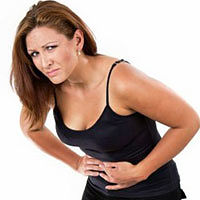

4. Lesions of the spleen.
The spleen occupies the main part of the left hypochondrium; it is the main blood depot, covered with a capsule. When it is stretched, a person feels pain. The most common reason an increase in the size of the organ – infectious mononucleosis; this disease is indicated by additional symptoms:
- Headache, weakness, dizziness.
- Increased temperature, sweating.
- Inflammation of the tonsils and lymph nodes.
- Enlarged liver.
- Pain in joints, muscles.
- People with mononucleosis are more susceptible to infection with the herpes simplex virus.
Splenic rupture is of traumatic origin. Blood accumulates in the abdominal cavity, causing the skin around the navel to turn blue. The person experiences increased heart rate, blood pressure drops, and becomes pale and dizzy. Treatment is carried out on an emergency basis, the only way out– removal of the spleen.
5. Pancreas.
Girdle pain in the left side is the main symptom of pancreatitis. Poor nutrition, alcohol abuse, and viral infections lead to inflammation. Additional complaints: nausea, vomiting does not bring relief, fever, symptoms of intoxication. If there is a lack of appetite, weight loss, and aversion to meat foods, pancreatic cancer should be suspected.
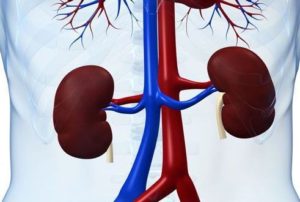
6. Neuralgia.
Pinching and compression of nerve fibers often manifests itself as pain in the left side.
- The nature of the pain is sharp, shooting.
- The condition worsens when inhaling, turning the body, bending. The patient is forced to remain in one position for some time.
- The pain radiates to the arm, under the shoulder blade, along the ribs on the other side, that is, along the nerve trunks.
- There is a feeling of numbness, crawling, and sweating increases.
7. Heart pathology.
If a patient complains that he has colitis on the left under the ribs, an attack of angina or myocardial infarction cannot be ruled out. Specific signs: palpitations, burning sensation, compression behind the sternum, lack of air. The fear of death is sharply expressed. The pain radiates to the left side, under the ribs, to the shoulder blade, shoulder, and lower jaw. First aid is to take nitroglycerin tablets. If the condition improved, it was an attack of angina; if not, it was a suspicion of myocardial infarction. Further treatment requires urgent hospitalization.
8. Lung diseases.
Lower lobe pneumonia is accompanied by dull, aching pain. The following symptoms indicate pneumonia:
- The cough is dry at first, then becomes wet with sputum production.
- Body temperature reaches high levels, signs of intoxication are expressed: headache, weakness, sweating, lack of appetite.
- Pain in muscles, eyes.
- Breathing quickens.
If there is colitis under the left rib, pleurisy (inflammation of the serous membrane of the lungs) can be suspected. Unpleasant sensations are associated with the position of the body; it is difficult for the patient to breathe or change position. Coughing and sneezing worsen the condition. Breathing is shallow, the person takes in small sips of air. It lies on the affected side, reducing mobility chest. Shortness of breath, fever, pallor, and protrusion of the spaces between the ribs come to the fore.
9. Osteochondrosis.
Pathology of the thoracic vertebrae is accompanied by pain in the left side. When the nerve root exits the spinal cord, pinching occurs. Therefore, a common complaint is that there is a stabbing along the ribs, mobility in this part of the spine is limited. Before starting treatment, it is recommended to do an MRI or CT scan of the chest area.
Why does pain occur on the right side?
On the side of the lower right rib there is the liver, gall bladder, ureter with kidney, duodenum and reproductive system. Neurological diseases can also cause pain. Only a specialist doctor, after undergoing a full examination, can identify the source of pain and prescribe therapy.The causes of painful tingling on the right side are pathologies:
- biliary tract;
- kidney stones;
- pleurisy;
- pyelonephritis;
- destruction of the hip joint;
- cholecystitis;
- pathologies of the veins or lymphatic system;
- disorders in the gastrointestinal tract;
- gynecological pathologies;
- pneumonia.
Often there is a painful stabbing in the right side in pregnant women, especially in the last months, when the child is actively gaining weight. With part of his body, the baby puts pressure on neighboring organs, especially the liver, duodenum and gall bladder. As a result, heartburn appears, as well as an unpleasant tingling sensation.
These physiological causes of pain do not indicate that any organ is damaged. In other cases, when the symptom occurs frequently and is sometimes unbearable, and other indications of the disease also appear, examination and assistance from a doctor are necessary.
Types of pain in the right side
A pain symptom is an indicator that the organ has turned on a protective mechanism to certain irritations. When making a diagnosis, the nature of the pain is important, since it often determines what exactly hurts - the blood vessels, skeletal system or peritoneal organs.Isolates pain:
- aching dull;
- sharp;
- tingling;
- pulling.
For an objective examination, the location and nature of the pain are determined, so that the pathological focus can then be determined using CT, ultrasound or MRI.
Aching dull pain looks like distension, as if some object was inserted from the inside that presses on the walls of the organs. The low intensity of aching long colic indicates that the pathogenesis involves large number sensitive small receptors. This type of symptomatology is common symptom liver cirrhosis, appendicitis, intestinal inflammation, tumors, hepatitis.
If a long, dull pain on the right suddenly goes away, this is not a sign of recovery, but a disturbance in the conduction of pain impulses. This phenomenon is characteristic of the necrotic process in the affected tissues.
Nagging pain often appear with little physical activity. This symptom characterizes pathologies of the peritoneum: inflammation of the kidneys, ovaries and uterus, parts of the duodenum, adrenal gland, as well as acute hepatitis, adhesions. If painful pulling sensations appear rarely, then they may indicate the movement of a small stone along the ureter or the development of osteochondrosis of the lumbar vertebrae.
Sudden sharp pain inherent in a small focus of inflammation. These may be gynecological pathologies, pinched nerves, diseases of the gastrointestinal tract or urinary system. Cravings are characterized by inflammation in the ovaries, pinched nerves in the spine, overflow of the intestines with gases, and a stone in the ureter.
Tingling pain It can be long-lasting or appear in paroxysms, as if something is stabbing from the inside with a thin, blunt tip. This is evidence of a pathological focus in appendicitis, inflammation of the gallbladder, or movement of a kidney stone. Painful sensations often intensify when turning and bending the body, sighing, during coughing and during active movements.
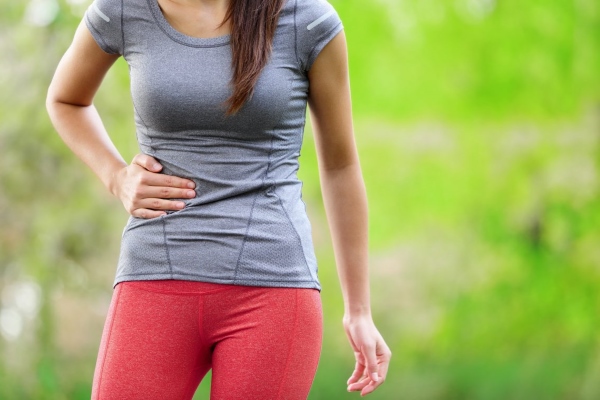
If additional symptoms appear, immediate medical attention is required. Pain symptoms may include:
- nausea;
- elevated temperature;
- stool disorder;
- yellowness of the mucous membranes and whites of the eyes;
- general malaise;
- burning in the lower abdomen and when urinating;
- increased irritability;
- difficulty urinating;
- vomit.
In any situation, isolated pain in the side on the right side should be the reason to seek medical help.
We also recommend reading the article.
If it stings in the lower abdomen on the right
Acute appendicitis– a common cause of pain in the lower abdomen on the right side. It is in this area that unpleasant stabbing pains are localized. They are accompanied by heaviness in the stomach, weakness, chills, and nausea.Intestinal upset in the form of diarrhea often appears, and the temperature also rises. Only surgical intervention will help with inflamed appendicitis. You cannot self-medicate at home. There are no other options other than surgery to relieve inflammation and pain.
Cholecystitis- another pathology that manifests itself in the form of colic on the right side of the abdomen. This is an inflammation of the gallbladder, which is often caused by heavy consumption of fats and spicy foods. Colic can spread sharply to the area shoulder joint, as well as under the shoulder blade. In acute cholecystitis there is also severe nausea, vomiting, belching with unpleasant smell, fever To prevent the gallbladder from festering, the help of a specialist is needed. If drug therapy does not help, surgery will be required.
For pyelonephritis unpleasant painful sensations occur in the lower abdomen and on the right between the ribs. They are accompanied by chills and frequent urination. Pyelonephritis, or inflammation of the kidneys, is caused by alcohol abuse, poor diet and contaminated water. To relieve inflammation in the kidneys, antispasmodics, painkillers, antibacterial drugs, and diuretics are prescribed. After prolonged pyelonephritis or improper treatment, stones may form in the kidneys.
Many diseases of the genital area cause tingling in the lower abdomen on the right. This:
- Adnexit– inflammation of the uterine tubes and appendages. May be one-sided and appears in at a young age after hypothermia.
- Ovarian cysts. They are caused by hormonal imbalances. In serious cases, cysts are removed through surgery. Only after this the pain goes away. Large cysts can burst, causing severe pain and internal bleeding. In this case, urgent hospitalization of the woman is necessary.
- Salpingitis– inflammation of the fallopian tube. This happens due to pathological microflora, after abortion or injury. Painful sensations are activated during sexual intercourse and in the toilet.
- Endometritis– inflammation of the uterine epithelium as a result of hypothermia, infection, hormonal imbalances. Not only nagging pain is observed, but also discharge, general intoxication and fever.
- Endometriosis– a non-inflammatory disease when the mucous membrane of the uterus grows on neighboring organs. Bleeding and hormonal disturbances are observed. Pain appears on the right side, spreading to the pelvic area.
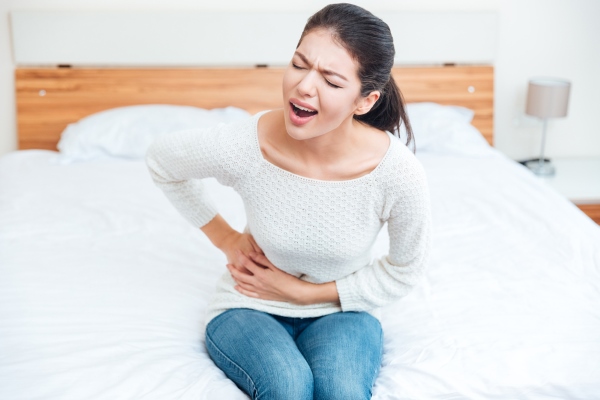
If it stings on the right side in the hypochondrium
Inflammation in the biliary tract brings pain to the right hypochondrium. Violations of these systems often appear in adolescence. They are also characterized by bitterness in the mouth, vomiting, and frequent nausea. The disorder is usually cured with medication, for example, choleretic agents and antispasmodics.Sharp pain under the ribs often spreads to the top of the abdomen, especially at night. This symptom of biliary colic along with chills, severe dizziness, ringing and noise in the ears and weakness. Biliary colic is eliminated with intensive drug therapy designed to eliminate inflammation, sand and small stones from the ducts.
Sharp excruciating pain in the right hypochondrium of a stabbing nature occurs with pleurisy, that is, a complication of pneumonia. It appears between the ribs in front and in the area of the shoulder blades and is accompanied by severe cough and difficulty breathing. Pleurisy is treated with antibiotics, and the temperature caused by it is reduced with antipyretic tablets or syrups. In any case, urgent hospitalization is needed, and not home self-medication.
What hurts in the right hypochondrium (video)
What diseases lead to pain and tingling in the right side and under the rib? What other symptoms indicate pathology? How to treat tingling in the right side? Let's find out more from the video.Stitching pain in pregnant women
As already explained, pregnancy can cause tingling pain on the right side, both in the lower abdomen and under the ribs. These manifestations are the result of fetal growth, when neighboring organs gradually move away. Minor tingling in the absence of other negative phenomena should not cause concern. This is a physiological phenomenon that goes away after childbirth.“No-spa” helps relieve pain, but you cannot use it on your own without a doctor’s prescription. Only a doctor will reveal the exact cause of the stabbing sensation after tests and a careful examination.
Diagnosis of tingling in the right side
If you have a frequent tingling sensation in your side for no reason, you should consult a therapist, who may prescribe a consultation with other specialists, for example, a gynecologist or gastroenterologist, a surgeon or a neurologist. In any case, it is necessary to:- blood test;
- Ultrasound of the abdominal cavity;
- radiography;
- strokes;
- urine test.
Treatment for tingling in the side
This is a symptom of many diseases, each of which has its own complex treatment. Cholecystitis and some gynecological problems are treated with medications. Often only surgery helps, for example in cases of tumors, movement of large stones or appendicitis.Have you noticed that you have colitis in your left side under the ribs, but you don’t know what it could be? In fact, a prick in the left side can occur for many reasons, which should not be ignored, but must be treated. Firstly, this may indicate a serious illness. Secondly, any pain always indicates some kind of disturbance/failure in the body. We advise you to understand such painful sensations in more detail.
What causes pain?
So, the left side under the ribs may hurt for the following reasons:
Myocardial infarction. Typically, pain in the rib area on the left may indicate this disease. In addition to pain, other symptoms are observed:
- unpleasant lingering sensations in the heart area,
- profuse sweating,
- sometimes there may be nausea, vomiting, diarrhea,
- blue lips,
- difficulty breathing;
- Perforated gastric/duodenal ulcer. Usually, with such a disease, a person feels an unbearable dagger pain, which, after its peak, seems to “ease” the patient’s condition. Most often, this disease manifests itself in those people who already have a peptic ulcer in their “arsenal”. Self-medication will not help here; you need to go to a hospital;
- Enlargement or rupture of the spleen. If the spleen ruptures, the patient will experience blue discoloration in the navel area. In this situation, you definitely need to call a doctor or take the patient to the hospital. Most often, an enlarged spleen is accompanied by constant weakness, headache, dizziness, high temperature, very increased sweating and other symptoms;
- Inflammation of the gastric mucosa, in which periodic, tolerable pain is observed, appetite may noticeably worsen, belching and vomiting may appear;
- In acute pancreatitis, the pain is usually severe and irritating. In addition to normal pain, the following symptoms may also be observed: nausea and vomiting with bile, bitterness in the mouth, fever, light-colored feces, dark-colored urine. Those people who have chronic pancreatitis do not feel such pain, and it, as a rule, occurs just after overeating;
- Also, pain on the left side under the ribs may be due to a diaphragmatic hernia. This disease occurs due to constant lifting of weights, heavy physical activity, and obesity. Pregnancy can also cause a hernia;
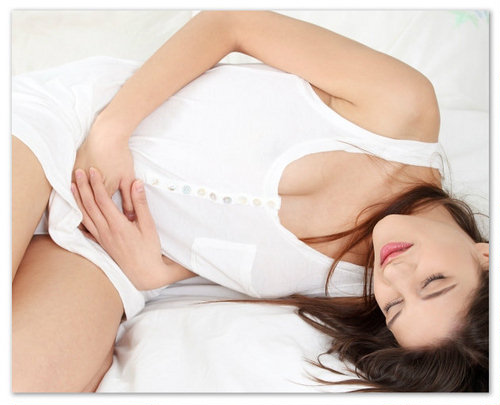
If the patient has had unsuccessful falls, as a result of which he received injuries or damage to the ribs, then the pain may be caused by this. In order to find out the real reason, you need to contact a specialist who will prescribe an x-ray. This condition should not be neglected, because the ribs may not heal properly and will cause discomfort for the rest of your life.
Treatment
As soon as you feel unpleasant pain on the left side under the ribs, it is better to immediately consult a doctor for advice. Sometimes a timely diagnosis can protect you from developing other serious diseases.
Do not self-medicate, because... You don’t know exactly what causes the pain.
Video
Why does it hurt in the right side under the ribs? This can be caused by completely different diseases. internal organs, poor nutrition, long running or fast walking, just heavy stress on the body. To understand how serious it is, you need to identify the cause of the disease.
What can cause tingling in the right side?
The right side of the hypochondrium is the “storehouse” of important human organs. The liver, diaphragm, part of the intestines, and gall bladder are located here. If stabbing pains occur quite often, then there is a very high probability of health problems. If this does not apply to physical activity and poor nutrition, then the problem is much deeper. The help of a specialist doctor is needed.
Diseases characterized by symptoms:
- Hepatitis (liver inflammation). It can be in both acute and chronic form. The pain is constant and aching in nature. Sometimes there are taste disturbances and a feeling of bitterness in the mouth. When palpating the right side of the abdomen, pain is felt in the lower liver.
- Pyelonephritis (kidney inflammation). The pain is localized not only in the right side, but also in the right side of the back. Very often accompanied by fever, chills, weakness, nausea with vomiting, and frequent urination.
- Inflammation of the duodenum. The pain is localized under the sternum, the most acute phase occurs before or after eating. Most often, attacks occur at night, as well as after physical exertion.
- Cholecystitis (inflammation of the gallbladder). Dull or sharp pain in the right side, nausea, weakness, belching with bitterness, possible vomiting.
- Pancreatitis (inflammation of the pancreas). The pain is acute, constantly increasing in the right part of the hypochondrium, which is accompanied by nausea, fever, vomiting, pallor of the skin, difficulty breathing.
- Polycystic right kidney. An increase in the size of the right kidney, which causes intermittent aching pain in the side and lumbar region of varying degrees of intensity. Along with this, general weakness, loss of appetite, nausea, stool disorders increase, and itchy skin, copious urination, sometimes with blood.
- Inflammation of the small intestine. The patient feels acute pain and constant cramps, which are accompanied by impaired stool, bloating, nausea, vomiting, increased body temperature, and lack of appetite.
- Inflammation of the appendages in women. It is characterized by pain during urination and in the lower abdomen, vaginal discharge that differs from normal (yellow, thick or foamy), menstrual irregularities, and increased body temperature.
- Pneumonia (pneumonia). Pain is felt in the hypochondrium area when taking a deep breath or coughing, accompanied by high fever, shortness of breath, cough, weakness, and chills.
- Inflammation of the cecum (appendix). Long lasting with periodic sharp pain in the right side of the abdomen. Important: severe pain that does not go away within 6 hours requires immediate examination by a doctor, otherwise the consequences can lead to serious complications and even endanger a person’s life.
Pain in the right side under the ribs can be associated with spinal problems (osteochondrosis, intervertebral hernia), arthrosis, recent injuries and blows. If the pain is constant, and not one-time and rare, then it makes sense to be examined so that, if necessary, treatment can be started on time.
What to do in case of sudden pain in the side?
If the pain appears suddenly, and there is no way to quickly seek qualified help, follow the recommendations below.
- Under no circumstances should the sore spot be heated, as pathogenic processes in the peritoneum may intensify.
- You should not take painkillers, as they can affect the composition of the blood and, as a result, the tests will not be reliable enough. As a painkiller, it is recommended to take an antispasmodic drug.
- Avoid eating for a while until your doctor does an examination and makes a diagnosis.
- You should not take choleretic drugs, as they increase the production of bile, which leads to stretching of the gallbladder, which can ultimately lead to its rupture.
- Limit physical activity so as not to provoke complications and worsen your well-being.
So, if you have colitis in the right side under the ribs, it is still better to seek help from a doctor. Do not self-medicate, as if done incorrectly, you can cause serious complications and even death. Stay healthy.
How? You haven't read yet:
Many patients complain of stabbing pain in the right side of the abdomen. You need to know why exactly you have colitis in your right side, because the cause can be either completely harmless or very serious, requiring immediate hospitalization.
Tingling and stabbing pain in the right side may indicate problems with the liver, kidneys, and gall bladder. Often their causes are quite serious, so you should not ignore this symptom.
The reasons that you have colitis in your right side can be very different. They are most often associated with the kidneys, gallbladder and liver.
Since diseases develop gradually, the symptoms also act. At first, a tingling sensation may occur on the right side, which will not provoke severe discomfort, it will simply make itself felt.
The main reasons that can lead to this feeling are the following:
- Pyelonephritis. In this case, the side may simply tingle or hurt. Additionally, back pain makes itself felt, which, as a rule, has a pulling and aching character.
- Urolithiasis. In this case, the tingling sensation will be accompanied by numerous other symptoms.
- Biliary colic. Pain with it can appear immediately and manifest as a slight tingling on the right side near the ribs.
- Cholecystitis. This is an inflammation of the wall in the gallbladder.
- Appendicitis. Although in most cases it makes itself felt severe pain, some patients claim that it all started with slight tingling on the right.
Often colitis in the right side and when running.
This usually worries people who have just started exercising, and due to poor preparation, their body is not yet adapted to the stress. Tingling also occurs when breathing improperly. As a result, the pain only gets worse, and for a person this may become a reason to stop running altogether.
It must be said that tingling sensations when running occur not only among beginner athletes. Professional athletes can also feel such tingling sensations, for example, after suffering an injury, when the body has time to relax and get used to the stress. In this case, you have to return to your physical form.
Stitching sensation in the side with pyelonephritis
Pyelonephritis is an inflammation in the kidneys, due to which the functioning of these organs may be disrupted.
 The main reasons for this may be the following:
The main reasons for this may be the following:
- Entry of harmful microorganisms into the body, which spread extremely quickly along with the blood and can affect any organ.
- First intimate contacts, which are stressful for the body, moreover, if all the necessary safety measures were not followed.
- Urolithiasis, in which, due to the formation of stones, problems with normal blood supply and stagnation may occur due to this.
- Weak immunity. Due to the weakness of the immune system, the human body cannot resist microorganisms that enter it.
- In men, the cause may be prostatitis.
- Diabetes mellitus. In this case, a person’s blood becomes thicker, especially if the blood sugar level rises. In view of this, various complications and pathological processes in other organs are possible.
Pyelonephritis manifests itself not only by tingling. Stitching sensations, as a rule, appear at the very early stage of the disease, when pathogenic microorganisms are just beginning their negative impact, entering the kidneys. Tingling may appear for a couple of days, and then the main symptoms of this disease appear.
Among them the following stand out:
- A sharp increase in body temperature. It can rise to 39 degrees.
- Temperature changes. For example, in the morning a patient may have a normal temperature, after a couple of hours it becomes extremely high, and then returns to normal again. With such changes a person will feel unwell
- The consequence of pain in the side will be a headache.
- Constant nausea, and possibly vomiting, which is the cause of the onset of the inflammatory process. Also, vomiting and nausea can be the body's reaction to the pain experienced. Everyone’s thresholds are different: some people tolerate pain well, others suffer greatly from it.
If such symptoms appear, you should consult a doctor as soon as possible. You should not endure constant tingling sensations, because they do not appear on their own.
Stitching sensations in the right side with cholecystitis
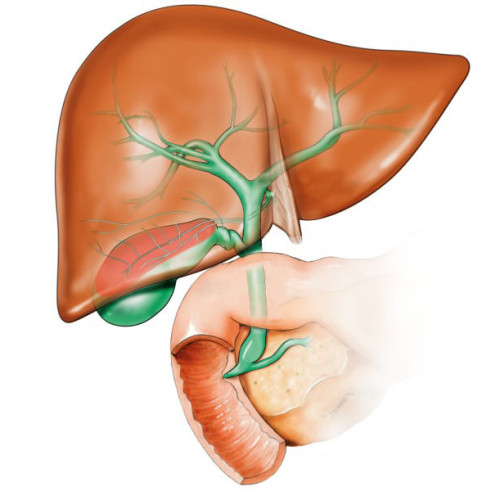 Cholecystitis is an inflammation of the gallbladder wall. Depending on the stage of the disease, symptoms will be determined. Among them it is worth highlighting the following:
Cholecystitis is an inflammation of the gallbladder wall. Depending on the stage of the disease, symptoms will be determined. Among them it is worth highlighting the following:
- Stitching sensations in the side, manifested at an early stage of the inflammation process, when only a small area is affected.
- Cramping pain as a result of eating fatty or spicy foods, which additionally irritate the mucous membrane.
- Vomiting and nausea.
- High body temperature, which indicates the presence of a source of inflammation in the body.
If the first signs of cholecystitis occur, you need to contact a specialist to undergo an examination and receive recommendations regarding the necessary treatment.
Urolithiasis as a cause of stabbing pain on the right side
Most often, urolithiasis affects people over forty years of age, although it becomes “younger” every year. The cause is most often associated with poor diet and lifestyle.
Tingling in right side- one of the symptoms of urolithiasis, and, as in the case of pyelonephritis, it manifests itself at the earliest stage of the disease.
The following reasons can be identified:
- Lack or excess in the urine of substances such as uric acid, cystine, calcium.
- Chronic infections of the genitourinary system.
- In the case of urolithiasis, hereditary factors play a role.
- A sedentary lifestyle, due to which the metabolism worsens and slows down.
- Kidney diseases, which lead to the fact that harmful substances are eliminated from the body in the urine much more slowly than necessary.
- Wrong diet.
Another popular cause of urolithiasis is a poor environmental situation., due to which a person’s immunity is reduced and cannot resist harmful microorganisms.
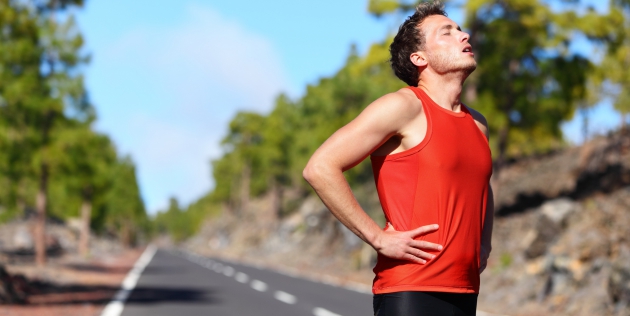 A stabbing sensation in the right side may be a symptom of this disease, but there are other signs that cannot be ignored:
A stabbing sensation in the right side may be a symptom of this disease, but there are other signs that cannot be ignored:
- The pain is mild at first, but after some time it can intensify and become simply unbearable.
- The presence of blood in the urine, which is a sign of injury to the tissues and mucous membranes of the stone.
- Painful urination, which is not normal, and in itself should alert you.
If urolithiasis is diagnosed at the earliest stage of its development, then the likelihood of its successful treatment is very high. The longer you delay treatment, the more complications you risk, so when you feel the first symptoms, try to immediately contact a specialist.
Biliary colic
Biliary colic, also known as hepatic colic, can either occur suddenly or be persistent. Some patients notice that they first feel a tingling sensation on the right side, which is almost unnoticeable. But then the pricking begins to get stronger, and as a result, a severe attack of pain occurs, which is very difficult to get rid of.
Most often, biliary colic makes itself felt when the bile ducts, and bile stagnates due to this. Then the pain can be sharp, and completely unexpected.
The sensation of tingling and pain usually occurs after a heavy meal, which is quite difficult for the body to cope with, or after physical activity. Colic can make itself felt after physical exercise, especially if there are stones, as a result of which they will begin to move.
Colic almost always goes away on its own after 6-8 hours. However, until it goes away, the person will be in great pain, and painkillers may not have any effect.
Stitches in the right side when running
If the right side begins to ache when running, then the reason for this is in the liver capsule. During running, blood is distributed throughout the body much more intensely than at rest.
When a person runs sharply, blood flows to all organs. But since the process itself requires about two minutes, the spleen and liver are poured first.
 A lot of blood enters the liver, its size increases, and it puts pressure on the capsule. To avoid this feeling, you should warm up before running. Then the blood will begin to supply the organs constantly, and there will be no sudden surges.
A lot of blood enters the liver, its size increases, and it puts pressure on the capsule. To avoid this feeling, you should warm up before running. Then the blood will begin to supply the organs constantly, and there will be no sudden surges.
If your right side starts to ache during exercise, then slow down. but don't stop, otherwise it will only get worse. Deep exhalations and inhalations can help, due to which blood circulation is normalized.
Colitis on the right side: what to do?
If the tingling sensation is an isolated incident, it appeared quickly and went away quickly, then there is no need to worry. If this symptom appears frequently and begins to bother you, then it makes sense to think about what caused it. To prevent unpleasant consequences, consult a doctor.
If you feel a sharp attack of pain at home, call ambulance. While she arrives, you can take some painkillers. But there is no need to take serious medications on your own, as you can only harm yourself.
The doctor will prescribe the necessary examinations for you, based on the results of which he will determine, which provokes discomfort. And then, depending on the specific cause, suitable treatment methods will be prescribed.


